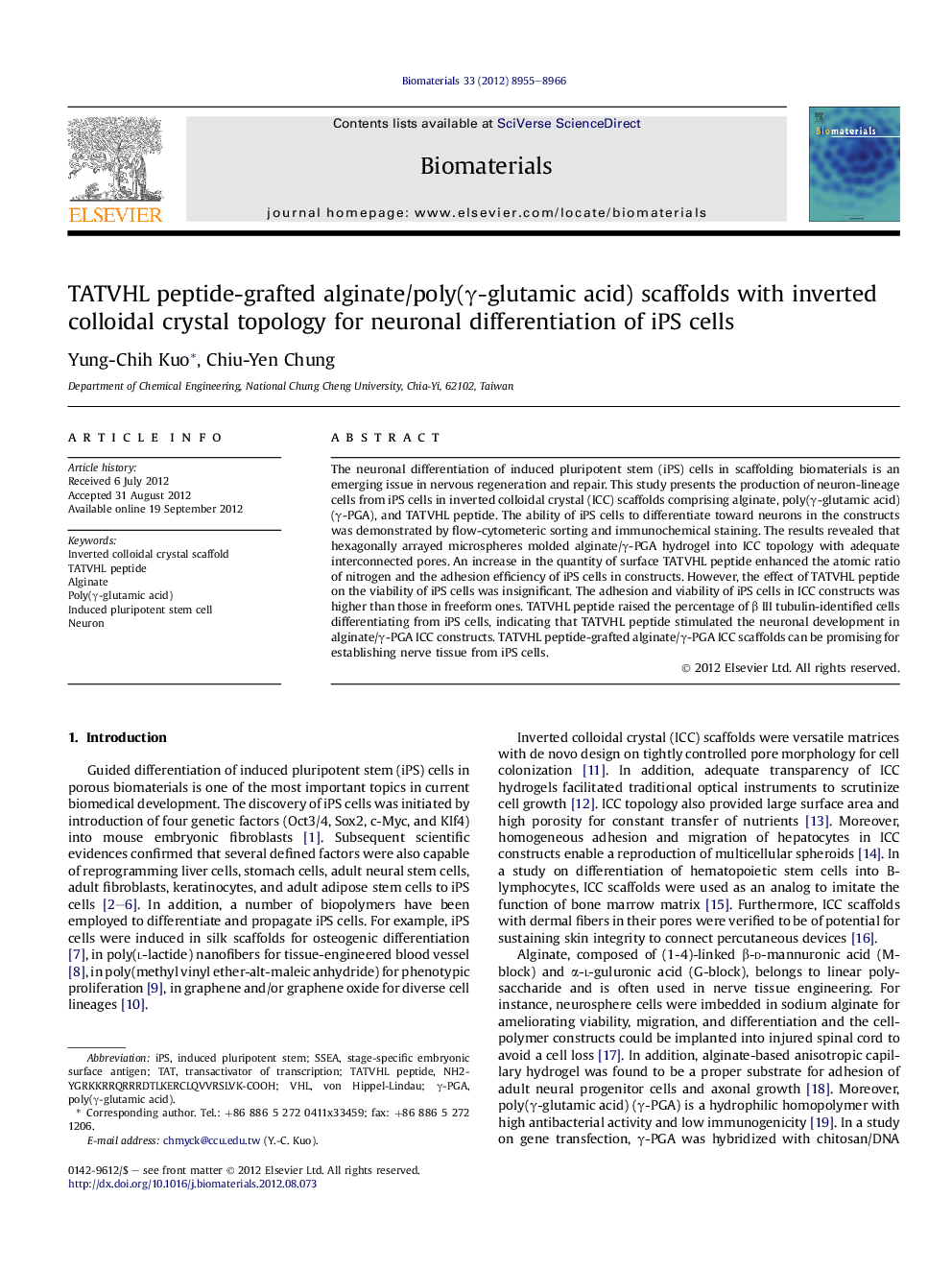| کد مقاله | کد نشریه | سال انتشار | مقاله انگلیسی | نسخه تمام متن |
|---|---|---|---|---|
| 6591 | 502 | 2012 | 12 صفحه PDF | دانلود رایگان |

The neuronal differentiation of induced pluripotent stem (iPS) cells in scaffolding biomaterials is an emerging issue in nervous regeneration and repair. This study presents the production of neuron-lineage cells from iPS cells in inverted colloidal crystal (ICC) scaffolds comprising alginate, poly(γ-glutamic acid) (γ-PGA), and TATVHL peptide. The ability of iPS cells to differentiate toward neurons in the constructs was demonstrated by flow-cytometeric sorting and immunochemical staining. The results revealed that hexagonally arrayed microspheres molded alginate/γ-PGA hydrogel into ICC topology with adequate interconnected pores. An increase in the quantity of surface TATVHL peptide enhanced the atomic ratio of nitrogen and the adhesion efficiency of iPS cells in constructs. However, the effect of TATVHL peptide on the viability of iPS cells was insignificant. The adhesion and viability of iPS cells in ICC constructs was higher than those in freeform ones. TATVHL peptide raised the percentage of β III tubulin-identified cells differentiating from iPS cells, indicating that TATVHL peptide stimulated the neuronal development in alginate/γ-PGA ICC constructs. TATVHL peptide-grafted alginate/γ-PGA ICC scaffolds can be promising for establishing nerve tissue from iPS cells.
Journal: Biomaterials - Volume 33, Issue 35, December 2012, Pages 8955–8966